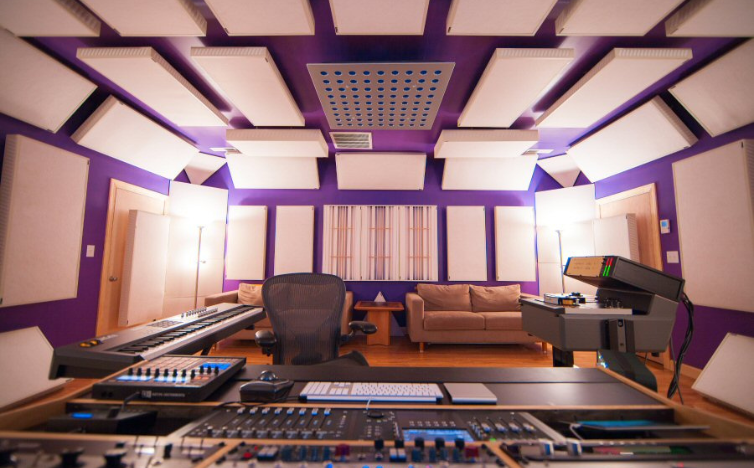Bass traps are a crucial component in creating high-quality sound in recording studios. Designed to absorb low-frequency sound waves, bass traps help control the acoustics of a space by reducing unwanted bass frequencies that can cause distortions. This article explores the function of bass traps, why they’re essential for any recording setup, and how they contribute to a more accurate and professional sound environment.
What Are Bass Traps?
Bass traps are specialized acoustic panels designed to absorb low-end frequencies, typically ranging from 20 Hz to 200 Hz. These frequencies are often problematic in recording studios because they tend to build up in corners and along walls, creating an imbalance in the sound. Bass traps work by converting the low-frequency sound energy into a form that can be absorbed rather than reflected back into the room, thus reducing bass buildup.
Why Are Bass Traps Necessary in a Studio?
In a recording studio, achieving accurate sound is essential for producing high-quality recordings. Without proper bass absorption, the studio space can suffer from excessive low-end energy, making it difficult to get an accurate mix. This often leads to bass-heavy or muddy recordings, as low-frequency sounds tend to overpower other elements in the audio spectrum. By installing bass traps, you can minimize these low-frequency issues, allowing for a more balanced and precise sound environment.

How Bass Traps Improve Sound Quality
Bass traps not only control low-end frequencies but also enhance the overall clarity of recordings. Here’s how they make a difference:
- Reduced Frequency Imbalance: Bass traps help manage low-end buildup, preventing bass frequencies from masking other sounds in the mix. This is especially important in small rooms where bass tends to be more concentrated.
- Improved Clarity and Definition: With bass frequencies under control, mid and high frequencies are less distorted, resulting in a clearer sound and better separation between instruments.
- More Accurate Monitoring: Accurate low-end response allows audio engineers and musicians to make informed decisions about their mixes, leading to more professional results.
See Also: Top Mistakes to Avoid When Installing Bass Traps
Placement of Bass Traps in a Recording Studio
For bass traps to be most effective, placement is key. Generally, bass traps are installed in the corners of a room where low frequencies tend to accumulate. Common places to position bass traps include:
- Room Corners: Both vertical and horizontal corners are ideal, as they capture low frequencies that build up in these areas.
- Behind Monitors: Placing bass traps behind studio monitors helps control the direct low-end frequencies that can cause interference with playback.
- Wall-to-Ceiling Corners: Low-end frequencies also collect along wall-to-ceiling intersections, making these areas suitable for additional bass trapping.
Types of Bass Traps for Recording Studios
Various types of bass traps cater to different acoustic needs. Some popular types include:
- Panel Bass Traps: These are flat and often covered with fabric, mounted directly on walls or in corners to absorb low-end energy.
- Corner Bass Traps: Designed to fit snugly into room corners, these traps are ideal for absorbing bass in spaces where frequencies tend to gather.
- Broadband Bass Traps: These are designed to absorb a wide range of frequencies, not just low-end, providing a more balanced sound treatment across the spectrum.
Benefits of Using Bass Traps in Studio Recording
Incorporating bass traps offers several key benefits for recording professionals:
- Enhanced Recording Accuracy: Bass traps contribute to an even and flat frequency response, making it easier to create accurate mixes.
- Improved Listening Experience: A balanced low-end helps musicians and producers hear details that might otherwise be masked, allowing for better judgments during recording and mixing.
- Professional-Grade Sound Quality: Bass traps reduce room resonances, providing a controlled environment that meets the standards of professional studios.
See Also: How to Choose the Right Bass Traps for Your Space
How Many Bass Traps Does Your Studio Need?
The number of bass traps required depends on the size and shape of the studio. Generally, at least four bass traps are recommended for small studios, with traps installed in each room corner. Larger studios or rooms with higher ceilings may need additional bass traps to achieve optimal sound control.
Call us: Contact DeSound Soundproofing Expert in Dubai For Soundproofing: +971 56 231 4204
Final Thoughts
Bass traps are essential for any recording studio aiming to produce professional-grade audio. By absorbing low frequencies, bass traps help eliminate muddy sound and create a clear, balanced listening environment. For audio engineers, musicians, and producers, investing in bass traps is a key step toward achieving accurate mixes and better overall sound quality.

